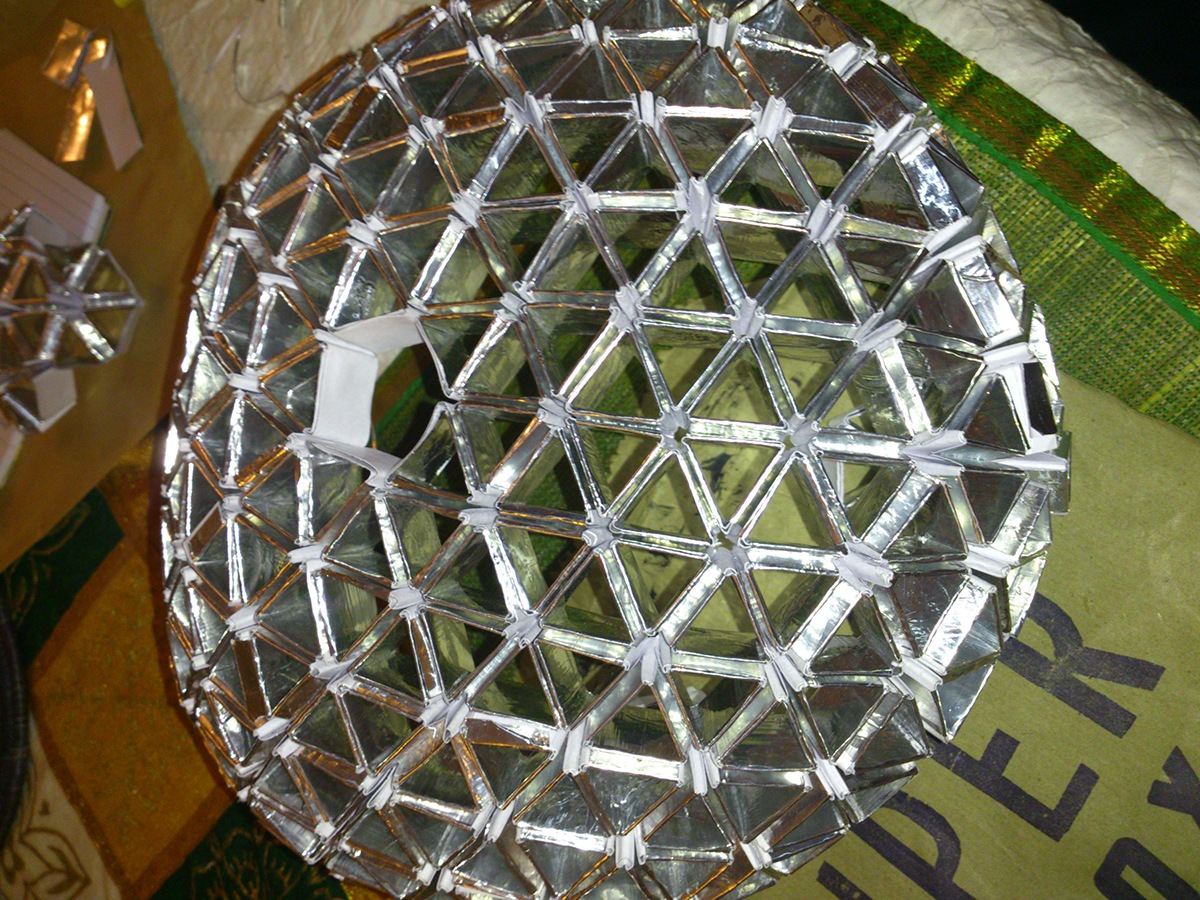This lampshade is a modular origami sphere that is made entirely out of aluminium foil stuck on chart paper. It uses strips of the foil to both create and attach each triangular module, requiring no part to be glued. Its geodesic dome like property casts a web of shadows and shapes on its surrounding space.
I was heavily inspired by Edward Chew’s tetra pack lampshade, and decided to mimic his lampshade to both understand the process of assembling such a complex module, and the material itself.

I started by glueing aluminium foil on chart paper. This was tricky as I didn’t want any wrinkles of the foil on the paper, so i had to roll the foil directly on a chart paper that was layered with fevicol.

After drying, I cut the paper into tiny strips of a width of 10mm, and a lengths of 62mm and 55mm, for the two types of triangles respectively. I then bent all the strips into a triangular shape,making sure that the foil lies on the inside , witch is the basic module for the entire lampshade. Each triangle is connected by another strip that goes between two triangles and folds inwards , locking it in place.
The process of locking two triangles together is related, until a hexagon is made. By using the smaller strips to make the triangles, it eventually makes a pentagon as one side is a little smaller than the other two sides. For the entire lampshade, there needs to be 108 hexagons and 12 pentagons, where each side of the pentagon is connected to a hexagon, i.e. the module would finally have a pentagon in the middle that is surrounded by five hexagons. This is the final module for the assembly.

The rest of the lampshade is assembled by connecting the modules using the aluminium strips. Understanding how to connect each module was tricky at first, but as I continued assembling it and the lampshade starts coming to shape, it’s easier to understand how to assemble all the pieces. I finally assembled half of the sphere and started making the other half, so that the two sides can be joined together finally.

Once the entire sphere was assembled, I removed one module from the top. This is where the lights would be added. I added a wire through the centre of this module for the lights connections, and added a small halogen lightbulb at the end. I then connected the module back to its original position using paper clips because it was difficult to connect it using the strips.

This lampshade was one of the most interesting projects, even though its design wasn’t originally self improvised. It showed me how much patience is required when working with modular origami, and how much planning is needed to think two steps ahead. Although the lampshade looks very delicate and fragile, all the joints holds up till date as the lamp shade looks just the way it was when I first made it.


